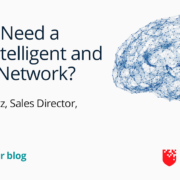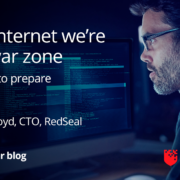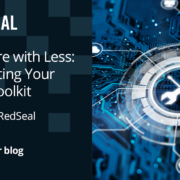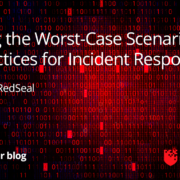Keep it Separate, Keep it Safe: How to Implement and Validate Cloud Network Segmentation
The distributed nature of cloud computing makes it a must-have for business, thanks to on-demand resource availability, network connectivity, and compute scalability.
But the cloud also introduces unique security challenges. First is a rapidly-expanding attack surface: As the number of connected third-party services powered by open-source code and APIs increases, so does the risk of compromise. According to the 2021 IBM Security X-Force Cloud Threat Landscape Report, more than 1,200 of the 2,500 known cloud vulnerabilities had been found within the proceeding 18 months. Additionally, 100 percent of penetration testing efforts by IBM X-Force teams found issues with cloud policies or passwords.
Cloud network segmentation offers a way for companies to reduce the risk of cloud threats. By dividing larger networks into smaller subnets — each of which can be managed individually — businesses can boost protection without sacrificing performance. Here’s how it works.
Why Is Cloud Network Segmentation Valuable to Network Security?
Cloud segmentation is part of larger defense-in-depth (DiD) security practices that look to lower total risk by creating multi-layered frameworks which help protect key data from compromise. DiD is built on the concept that there’s no such thing as a “perfect” security solution — since, with enough time and patience, attackers can compromise any protective process. By layering multiple security measures onto network access points or data storage locations, however, the effort required for compromise increases exponentially, in turn reducing total risk.
And by breaking larger cloud networks down into smaller subnets, the scale of necessary defense decreases, making it possible for teams to differentiate lower-risk subnets from those that need greater protection. Segmentation offers practical benefits for businesses.
Reduced Complexity
Segmenting larger cloud frameworks into smaller cloud networks allows teams to reduce the overall complexity that comes with managing cloud solutions at scale. Instead of trying to find one policy or process that works for cloud networks end-to-end — without introducing security risks to protected data or limiting users’ ease of access — teams can create purpose-built security policies for each network segment.
Increased Granular Control
Segmentation also offers more granular control over network defenses. For example, teams could choose to deploy next-generation firewall tools, such as those capable of discovering and analyzing specific user behaviors, or implement runtime application self-protection (RASP) functions on a case-by-case basis.
Improved Responsiveness
Smaller subnets additionally make it possible for IT professionals to identify and respond to security issues quickly. Here’s why: Given the geographically disparate nature of cloud services — one provider might house their servers locally, while another might be states or countries away — tracking down the root cause of detected issues becomes like finding a digital needle in a virtual haystack. While it’s possible using advanced detection tools and techniques, it could take days or weeks. Segmentation, meanwhile, allows teams to identify and respond to issues on a segment-by-segment basis quickly.
Enhanced Operations
Network segmentation also helps companies enhance operations by aligning with cloud security best practices such as zero trust. Under a zero trust model, user identity is never assumed; instead, it must be proven and verified through authentication. Segmentation makes it possible to apply zero trust where necessary — such as gaining access to network segments that store personally identifiable information (PII) or intellectual property (IP) — in turn helping streamline cloud access without introducing security risk.
How to Implement Network Segmentation
Network segmentation isn’t a new concept — companies have been leveraging physical segmentation of networks for years to reduce the impacts of a potential breach. As the name implies, this type of segmentation uses physical controls such as firewalls to create separate subnets and control traffic flows.
Cloud segmentation, meanwhile, comes with a bigger challenge: Creating network segments across digital environments that may be separated by substantial physical distance. As a result, cloud segmentation was often deemed too complex to work since the sheer amount of unique cloud services, solutions, and environments combined with the dynamic nature of cloud resources meant it was impossible to effectively portion out and protect these subnets.
With the right strategy, however, it’s possible for businesses to both segment and secure their cloud networks. Here, logical rather than physical segmentation is vital. Using either virtual local area networks (VLANs) or more in-depth network addressing schemes, IT teams can create logical subnetworks across cloud services that behave as if they’re physically separate, in turn increasing overall defense.
Worth noting? Validation of these virtual networks is critical to ensure protective measures are working as intended. In practice, this means deploying tools and technologies that make it possible to visualize access across all network environments — local or otherwise — to understand network topology and explore traffic paths. Validation also requires the identification and remediation of issues as they arise. Consider a subnet that includes multiple cloud services. If even one of these services contains vulnerabilities to threats such as Log4j, the entire subnetwork could be at risk. Regular vulnerability scanning paired with active threat identification and remediation is critical to ensure segmentation delivers effective security.
Closing the Cloud Security Gap with RedSeal
Cloud solutions offer the benefit of any time, anywhere access coupled with scalable, on-demand resources. But clouds also introduce unique security challenges around user access, data protection, and security threat monitoring.
As a result, protecting data in the cloud requires a defense-in-depth strategy that creates layers of protection rather than relying on a single service or technology to defend against evolving threats. Cloud network segmentation is one key component in this DiD strategy — by logically segmenting cloud services into smaller and more manageable networks, companies can reduce complexity, increase control and improve responsiveness.
But segmentation alone isn’t enough; enterprises also need the ability to visualize multiple micro-networks at scale, identify potential issues and quickly remediate concerns.
Ready to get started? Discover how RedSeal can help visualize, verify and validate your cloud network segmentation. Watch a Demo.






